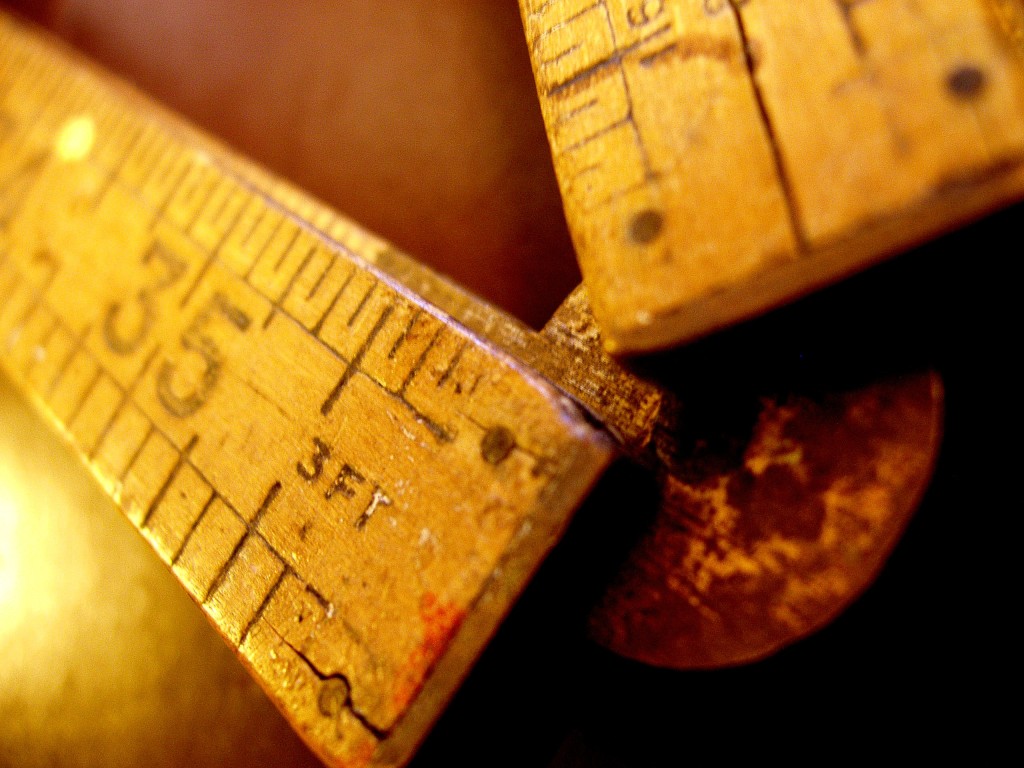You know not to try to keep up with the Jones. But when Mr. Jones tells you that he got a “great deal” on his homeowner’s insurance by switching to one of the big name insurance companies with funny commercials, he piques your curiosity.
Maybe it’s been years since you’ve reviewed your policy, so how do you decide how much insurance to get for your home?
One study by Marshall & Swift found that though 96% of homeowners have insurance, 64% of homes are underinsured. When Mr. Jones scored his “great deal,” there’s a 64% chance that he got too little coverage. You obviously don’t want that.
Use the five steps below to determine the right amount of insurance on your home. You can then go shopping for the best value based on your needs—not on an arbitrary “great deal.”
1. Your agent should calculate the re-construction cost of your house.
Why? Because your insurance company will use the estimated re-construction cost of your house to determine your homeowner coverage limits and premium.
Remember that the total cost must include labor and supplies. In the event of a major disaster, your home probably won’t be the only one affected. Therefore, Economics 101 comes into play: when demand is high and supplies are low, prices rise.
Think like an insurance company. And plan for the worst.
You can calculate re-construction costs several ways:
- For a rough estimate, multiply the total square footage of your home by the local building costs per square foot. A local real estate agent, builders association, or insurance agent should be able to give you an estimate on cost per square foot for your neighborhood.
- To get a more exact figure, use a free calculator to determine the reconstruction cost. Unless you’re a seasoned general contractor, you might not know whether your foundation and floor are Class 1 or Class 6. That’s okay. You’re simply trying to get a baseline estimate at this point.
- Lastly, your insurance agent should be able to develop an approximate re-construction cost using insurance industry software. Any insurance company is most likely going to require this method as opposed to a number you might come up with. Plus, your agent includes it as a part of the service they provide to you!
2. Determine the type of coverage you want.
Check your current policy to see if you have the coverage you need. Insurance is like most things; you get what you pay for.
Here are the three categories of coverage:
- Actual Cash Value – The insurance company will pay the cost to replace the structure plus the value of your belongings after deducting depreciation.
- Replacement Cost – This is the cost to replace without the deduction for depreciation. You could repair or rebuild your home up to the total amount of insurance.
- Guaranteed (or Extended) Replacement Cost – Premiums will be higher than with the other two options, but this coverage is the most comprehensive. By factoring in things like inflation, your payout will be for whatever it costs to repair or rebuild your home. If a company offers an extended replacement cost, then they will offer more coverage than you purchased (25-50% higher than the limit in most cases).
Decide which category is best for you and your family if disaster were to strike.
3. Create a household inventory.
The structure of your home isn’t the only asset you want to protect. If your house burned down, you would have to replace all of your furniture and belongings.
- Create a Master Household Inventory file (ideally backed up in the cloud with Dropbox or Google Drive). Also, make a video by going room to room.
- Save a hard copy in your safe with your other important legal documents. This Honeywell Fire/Water Safe Chest is a good option.
Remember to add the total value of your possessions to the total reconstruction cost. Hold on to that number. (Your numbers may be different, but on average, coverage should be between 50%-75% of the cost of replacing the main house.)
4. Decide how much Liability, Medical, and ALE you need.
- Save all of these files in Dropbox or Google Drive. (If the house burns down, it’s taking your hard drive with it. Oh, and you’re backing up all of your family photos, right?)
- It doesn’t hurt to photograph sales receipts, purchase contracts, and appraisals for your bigger ticket items.
- Jot down the serial numbers for major appliances and electronic equipment.
- Place an estimated value next to each item.
- Walk around your house and make a list of all of your possessions.
- Liability coverage protects you from lawsuits filed against you. Have a rambunctious pet? Your liability coverage kicks in to protect you if ‘ol Sparky becomes protective of you and bites Mr. Jones.
- Additional Living Expenses (ALE) coverage fills in the gap for lodging, meals, and other living expenses if Mother Nature decimates your home.
Medical coverage pays for other people’s medical bills if they are injured on your property.
You might not be able to come up with a perfect number here, so just think through your family’s financial situation and how you would respond if tragedy struck. Your agent can assist with this.
- Where are you going to stay while the disaster crew cleans up your neighborhood and the construction crews rebuild your home?
- How much will food and other living expenses cost during that time period?
Can you cover a major lawsuit or someone else’s medical bills out of your savings? Are you sure you want to?
5. Schedule an appointment with an independent agent.
You’re going to be asking a lot of questions. And running through a lot of scenarios. And crunching a lot of numbers. You’re going to want to either be face-to-face with your agent or at least one in the same time-zone.
Big name insurance companies make big promises. They have nifty websites that can spit out a quote, and that “15 minute call” seems like a huge timesaver.
But we’re talking about the value of your home and all of your possessions.
At the meeting with your agent, present all of your specific, personal details, and ask him or her questions like the ones below to ensure you haven’t overlooked anything:
- “Is my wife’s jewelry protected from theft or loss?”
- “Do we need have a separate policy for that original painting from the Italian Renaissance?”
- “We’re building a garage next year. How will that change our policy?” (“Oh, the policy is different if it’s attached or not attached? Glad we asked ahead of time.”)
- “We’re new to the area. Our neighbor said the drainage ditch overflows into our property during heavy storms. I’ve set up my home office in the basement. Is my business equipment covered by our home insurance?” (“No? Good to know. Can you help me protect my business assets?”)
- “Our yard is full of beautiful, old trees. Should we get more coverage or trim limbs hanging over our house?”
“We’re concerned about protecting our family wealth. Would an Umbrella Policy be appropriate for our situation?”
Now, your agent can go shopping for you.
You now know how much it will cost to rebuild your house and to replace all your possessions. You’ve gotten clarity around some of the nuances. With this arsenal of data points, you’re ready for your agent to look around for the best plan for you.
Focus on the fine print, not “the lowest cost.” Attention to detail can save you lots of money in the long run.
Also, plan to review your policy on an annual basis. Because home-loss claims are infrequent, people usually purchase home insurance and then forget about it. Going forward, you’ll have everything you need to make an informed decision.
If this might seem like a daunting process, we’d be happy to help you. Give us a call at 615-269-4561 or email hello@churchandassociates.com.



Speak Your Mind